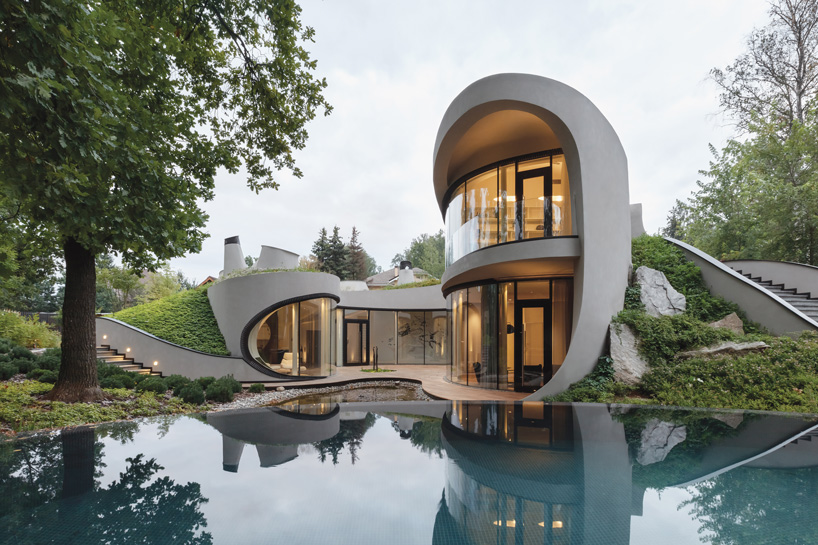Just How CDA Architects Integrate Eco-Friendly Practices in Architectural Projects
Just How CDA Architects Integrate Eco-Friendly Practices in Architectural Projects
Blog Article
Understanding the Collaborative Refine Between Architects and Engineers in Modern Building And Construction Projects
The joint process between designers and engineers is crucial in modern building projects, as it balances design intent with engineering usefulness. Discovering these dynamics exposes insights that could considerably influence task end results and total sector criteria.
The Significance of Collaboration
The collective synergy between architects and designers is necessary for the successful realization of any type of construction job. This partnership unites distinctive competence and perspectives, making it possible for the integration of ingenious style with sensible design solutions. By collaborating, designers and designers can make sure that a task not just meets aesthetic and functional requirements but likewise follows security, sustainability, and monetary restrictions.
Partnership promotes a common vision, assisting in the placement of objectives and assumptions from the beginning. This positioning is vital in resolving possible obstacles and mitigating dangers that might develop during the task lifecycle. A collaborative approach permits for the reliable allowance of resources, optimizing both time and cost.
The relevance of cooperation reaches the iterative process of layout and building, where comments from engineers can educate architectural decisions, bring about even more possible and lasting layouts. On the other hand, architects can motivate engineers to think artistically regarding just how to accomplish structural honesty without jeopardizing artistic intent. Inevitably, the collective partnership between architects and designers is not merely valuable; it is essential to the creation of top notch, practical, and cutting-edge developed environments that fulfill the needs of culture.
Communication Methods and Tools
Efficient interaction methods and devices are important for cultivating collaboration in between architects and engineers throughout the task lifecycle. Establishing clear networks of interaction is necessary to ensure that all employee are aligned with job purposes, timelines, and responsibilities. Routine conferences, both in-person and virtual, offer possibilities for stakeholders to discuss development, address problems, and make informed decisions.
Making use of task administration software program, such as BIM (Structure Info Modeling) systems, boosts collaboration by allowing real-time sharing of layout alterations and technical specifications. These tools assist in openness, allowing architects and engineers to imagine adjustments and analyze their effect on the overall project.

Shared Objectives and Job Vision

Establishing common objectives includes open discussion and a comprehensive understanding of each technique's contributions. Designers typically concentrate on layout intent, spatial relationships, and individual experience, while designers emphasize structural stability, systems capability, and compliance with guidelines (cda architects). When these perspectives are lined up, the outcome is a natural project that follows both innovative desires and technical expediency
Additionally, a distinct project vision fosters responsibility amongst employee, urging each individual to take ownership of their duty in attaining the desired end result. Normal check-ins and joint workshops can further enhance this commitment, permitting adjustments to be made as the get more project advances. Ultimately, site link a shared vision not only boosts team effort yet likewise elevates the quality of the final deliverable, causing effective job conclusion.
The Role of Technology
Leveraging innovation has actually come to be important in improving cooperation between architects and engineers. Structure Details Modeling (BIM) stands out as a pivotal technology, enabling both designers and designers to develop detailed 3D models that encapsulate style intent and architectural honesty.
In addition, cloud-based platforms enable seamless collaboration, enabling job stakeholders to gain access to and upgrade job information from anywhere. This cultivates a society of openness and liability, as adjustments can be tracked and assessed in real-time. In addition, mobile applications more boost communication, providing on-site teams with immediate accessibility to task requirements and updates.
Arising modern technologies such as expert system and artificial intelligence are additionally starting to contribute in anticipating analysis, helping teams identify possible concerns prior to they arise. Ultimately, the duty of modern technology in architecture-engineering cooperation not just enhances workflow performances yet likewise improves innovation, leading to even more successful project outcomes. By welcoming these technological developments, architects and designers can guarantee a more natural and efficient collaborative procedure throughout the building lifecycle.
Study in Effective Partnerships
Countless study highlight the profound influence of efficient partnerships in between architects and designers on job end results. One significant example is the cooperation on the High Line in New York City, where landscape engineers, engineers, and city planners functioned together to change an abandoned railway into a lively public park. This multidisciplinary approach not just enhanced the aesthetic top quality however additionally guaranteed architectural safety and ecological sustainability.
Another exemplary instance is the design and building and view it construction of the Sydney Opera House. The collaboration in between architect JÃ ¸ registered nurse Utzon and architectural engineer Ove Arup exhibited cutting-edge problem-solving. Their cooperation allowed for the renowned shell-like layout while addressing complicated design challenges, eventually causing a timeless architectural masterpiece.
The Burj Khalifa in Dubai better demonstrates the importance of collective initiatives. cda architects. The assimilation of architecture and engineering know-how enabled the project team to accomplish extraordinary elevations while adhering to safety policies and visual vision
These instances emphasize the relevance of interaction, trust, and shared goals. In today's complicated building atmosphere, such partnerships are necessary to browsing difficulties and supplying projects that fulfill both functional and visionary objectives.
Verdict
To conclude, the cooperation between designers and engineers is vital for the success of contemporary building jobs. Reliable interaction methods, a shared project vision, and the integration of advanced technologies are critical parts that promote this collaboration. By promoting a culture of accountability and leveraging devices such as Structure Info Modeling (BIM), teams can navigate task intricacies, making sure that aesthetic, functional, and sustainability purposes are accomplished. Eventually, this synergy brings about cutting-edge and successful project end results.
Report this page